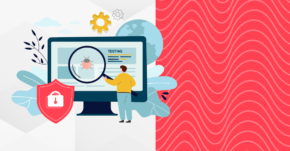
🔒 Behind Every Programmer Lies a Debugger
Hands are popping up in the classroom. Some students are discouraged, others feel frustrated or incompetent. Debugging can be challenging both for students and for teachers.

Hands are popping up in the classroom. Some students are discouraged, others feel frustrated or incompetent. Debugging can be challenging both for students and for teachers.
This article is reserved for subscribers of the digital version of the magazine.

Projects that integrate computer programming and robotics are undeniably perceived as levers to help students acquire multiple skills. They become useful tools for teachers’ professional development. But, like their students, they also require resources in order to fully engage in their learning.
This article is reserved for subscribers of the digital version of the magazine.

Bursts of laughter. This is what first made me look up from the mountain of objects and papers piled up on my desk. Then, instead of doing my little cleaning routine while my students were having fun, I continued to watch them.
This article is reserved for subscribers of the digital version of the magazine.
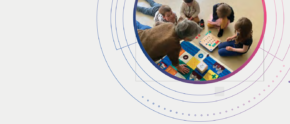
Many experts from the world of education have demonstrated through research that learning how to code is not just about using technology. Indeed, before turning on the computer, it might be a good idea to get out a sheet of paper and a pencil to get the students started.
This article is reserved for subscribers of the digital version of the magazine.

Discover or re-discover various apps and sites ideas!
This article is reserved for subscribers of the digital version of the magazine.
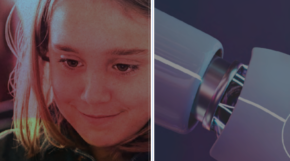
Phase 3 of the Cancode Program Has Begun / Support for Creative Laboratories in Maritime Schools.
This article is reserved for subscribers of the digital version of the magazine.

Here are some examples of prototypes applications developed by young girls as part of the Technovation Montréal organization’s programs. The participants are all developing prototypes and some features can be used. Several of them have been recognized during Technovation’s international competition.

Description of Some Robots Available for Pedagogical Use, in alphabetical order, according to the list provided by the Centre d’acquisitions gouvernementales du Québec

Bien que la programmation soit de plus en plus présente dans les écoles, la majorité des applications utilisées proposent d’apprendre la programmation par bloc. Celle-ci permet de comprendre la logique derrière la programmation et évite certaines difficultés reliées à l’apprentissage du langage de programmation lui-même. Une fois cette base bien maîtrisée par les élèves, il est possible d’aller plus loin et d’intégrer la programmation textuelle.
Cet article est réservé aux abonnés de la version numérique du magazine.

Voici des exemples de prototypes d’applications développés dans le cadre des programmes de l’organisme Technovation Montréal. Certains présentent même des fonctionnalités qui peuvent déjà être utilisées. Plusieurs d’entre eux ont fait l’objet d’une reconnaissance lors de la compétition internationale de Technovation.

Description de robots pouvant être utilisés pour la robotique à l’école avec lien vers des autoformations (en ordre alphabétique, selon la liste du Centre d’acquisitions gouvernementales du Québec)
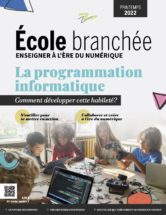
Compléments et références du magazine, Vol. 24 no 3 (printemps 2022)
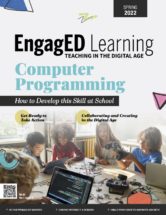
Additional References from EngagED Learning magazine, Volume 1 issue 3 (Spring 2022)

L’expression « laboratoire créatif » ne vous est probablement pas inconnue, mais sauriez-vous décrire ce que c’est? Dans ce dossier, nous vous proposons un tour d’horizon de l’univers des laboratoires créatifs dans les écoles. Qu’est-ce que c’est exactement, pourquoi et comment doter votre école ou votre classe d’un tel environnement de création et de collaboration?
OUPS! Ce dossier est réservé aux abonné(e)s du magazine!

Although social and emotional competencies and their role in human lives are recognized worldwide, there is no universally official definition of them. Emotional intelligence, psychosocial competencies, socio-affective skills, etc.: they have all kinds of names. Over the years, constants have nevertheless emerged, and various benchmarks have materialized.
This article est réservé aux abonnés de la version numérique du magazine.

If we recognize that these social and emotional competencies are transversal and intrinsically linked to school learning, it is clear that they are rarely the subject of explicit teaching at school, even if they are taught as other school subjects (Oliviera et al., 2021; Rimm-Kauffman and Hamre, 2010). Moreover, in order to teach them and reinvest them into everyday school activities, teachers must first have developed them for themselves.
This article est réservé aux abonnés de la version numérique du magazine.
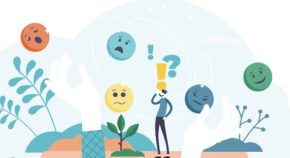
Affective or social-emotional competencies play a major role in teaching and learning. However, these competencies are not stagnant: they are competencies that anyone can learn to develop—but not just in any manner! It is in this perspective that developing social-emotional competencies becomes a major subject in teachers’ professional training and educational arsenal.
This article est réservé aux abonnés de la version numérique du magazine.

Sometimes we seem to be better advised and equipped in matters of financial health than in matters of mental health. At least there seems to be less stigma surrounding the former. In addition, this so-called advice tailored to financial investing, i.e. intended to help you plan and ensure long-term financial stability, can be just as useful to us in a parallel objective: that of maintaining, in a preventive manner, psychological balance.
This article est réservé aux abonnés de la version numérique du magazine.

Here are four ways to support students’ social and emotional well-being during the transition from online to in-person learning—each tied to core SEL competencies from the Collaborative for Academic, Social, and Emotional Learning (CASEL).
This article est réservé aux abonnés de la version numérique du magazine.

Here are four ways to support students’ social and emotional well-being during the transition from online to in-person learning—each tied to core SEL competencies from the Collaborative for Academic, Social, and Emotional Learning (CASEL).
This article est réservé aux abonnés de la version numérique du magazine.
Pour vous offrir une meilleure expérience, nous utilisons des témoins (cookies). Cela permet de traiter des données telles que le comportement de navigation ou les ID uniques sur ce site. Le fait de ne pas consentir ou de retirer son consentement peut avoir un effet négatif sur certaines caractéristiques et fonctions.